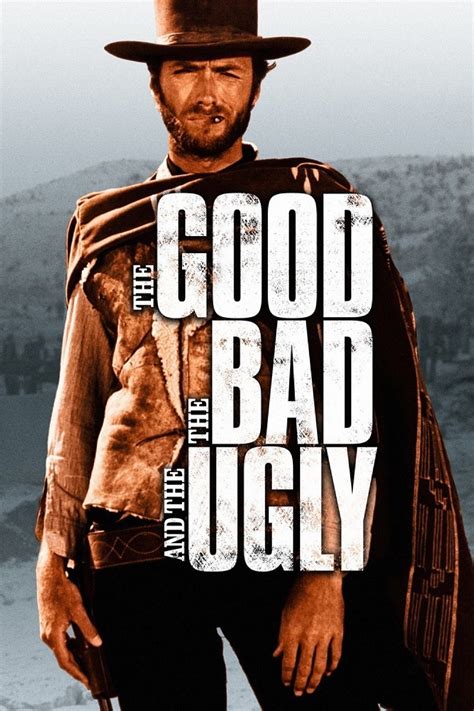The Good, the Bad and the Ugly

Description:
The Good, the Bad and the Ugly is a 1966 Italian epic Spaghetti Western film directed by Sergio Leone. The film follows three gunslingers competing to find a fortune in buried Confederate gold amid the violent chaos of the American Civil War.Keywords:
Spaghetti Western, Civil War, Betrayal, Greed, ShowdownWhat was the message behind The Good, the Bad and the Ugly?
"The Good, the Bad and the Ugly," directed by Sergio Leone, explores themes of morality, greed, and the nature of humanity amid the chaos of the American Civil War. The film presents three archetypal characters—Blondie (the Good), Angel Eyes (the Bad), and Tuco (the Ugly)—who embody different aspects of human nature. The pursuit of wealth leads to betrayal and violence, highlighting the futility of greed. Ultimately, the film suggests that in a lawless world, personal codes of honor and survival take precedence over traditional notions of good and evil.
What's the famous line from The Good, the Bad and the Ugly?
One of the most famous lines from "The Good, the Bad and the Ugly" is delivered by the character Blondie (played by Clint Eastwood): "When you have to shoot, shoot. Don't talk." This line encapsulates the film's themes of pragmatism and the harsh realities of the Old West. The movie, directed by Sergio Leone, is a classic Spaghetti Western and is known for its iconic score by Ennio Morricone, memorable characters, and intense standoffs.
Is The Good, Bad, and the Ugly worth watching?
Yes, "The Good, the Bad and the Ugly" is definitely worth watching. Directed by Sergio Leone, this 1966 Spaghetti Western is renowned for its iconic score by Ennio Morricone, memorable characters, and epic storytelling. The film follows three gunslingers as they search for buried treasure during the American Civil War. Its innovative cinematography and themes of greed and betrayal have influenced countless films. The performances, particularly by Clint Eastwood, Lee Van Cleef, and Eli Wallach, are outstanding. It's a classic that remains highly regarded in cinema history.
Why is TUCO called the ugly?
In "The Good, the Bad and the Ugly," Tuco, portrayed by Eli Wallach, is referred to as "the Ugly" primarily due to his rough appearance and scruffy demeanor. Unlike the other two main characters, Blondie (the Good) and Angel Eyes (the Bad), Tuco’s physical features and unrefined personality embody the idea of being "ugly." This label contrasts with the more polished and menacing characteristics of the other two, highlighting the film's themes of morality and the complexity of human nature.
Explore More Categories:
Social Acceptance Intelligence Social Status Class Conflict History Sketch Comedy Religion Gangster Drama Travel Corpse Antics Space Opera Human Rights Emotional Illusion Experiment Corporate Basketball Interviews Quarter Life Crisis Performance Disconnection Wildlife Entrepreneurship Time Travel Financial Crisis